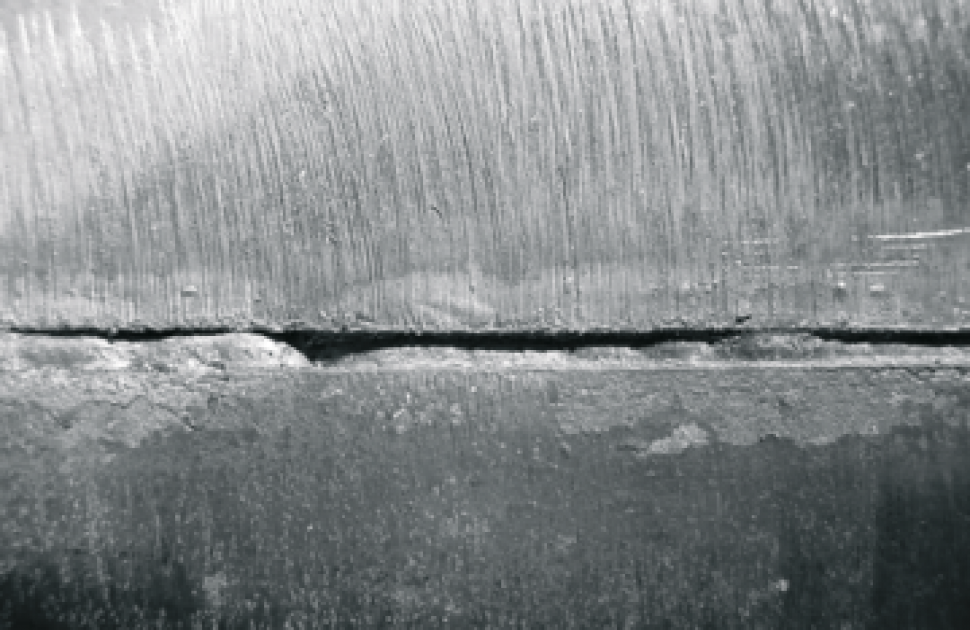Comprehending the Causes and Solutions for Undercut Welding in Metal Construction Processes
In the realm of metal fabrication processes, the occurrence of undercut welding poses a significant challenge that requires a thorough understanding of its reasons and sensible remedies. The detailed interaction of different elements during welding operations can lead to this unwanted sensation, affecting the structural integrity and overall top quality of the bonded joints - Preventing weld undercut. By exploring the origin of undercut welding and exploring reliable therapeutic procedures, producers can elevate the criterion of their handiwork and make sure the production of flawless steel elements
Common Sources Of Undercut Welding
Regularly neglected in metal manufacture, undercut welding happens due to various aspects that demand thorough focus and expertise to be properly reduced. One usual root cause of undercut welding is excessive warmth input. When the heat input is too expensive, it can result in the melting and succeeding erosion of the base product along the edges of the weld joint, developing a groove or undercut. Furthermore, inappropriate welding methods, such as making use of the wrong welding angle or take a trip speed, can likewise add to damage development. Insufficient securing gas protection is an additional key variable that can result in damaging. Not enough gas protection falls short to protect the weld pool adequately, resulting in oxidation and undercut issues. The choice of welding specifications, such as voltage, existing, and cord feed speed, plays a considerable function in the event of undercut welding. Understanding these common causes is vital for implementing safety nets and ensuring premium welds in steel manufacture procedures.
Impact of Incorrect Welding Parameters
Unreliable welding criteria can considerably jeopardize the honesty and top quality of welded joints in metal construction procedures. The influence of wrong welding parameters manifests in different methods, leading to architectural weak points and defects in the welded components. Precise interest to welding specifications is vital to make certain the manufacturing of high-quality welds with the desired mechanical homes and structural stability.
Impact of Improper Torch Angle
Incorrect torch angle in welding operations can dramatically impact the top quality and honesty of the final weld joints in steel fabrication processes. Damaging is an usual welding flaw where a groove develops along the weld toe, compromising the joint and compromising its structural stability.
A lantern angle that is as well steep can lead to insufficient infiltration, incomplete combination, and boosted spatter. On the various other hand, a torch angle that is too superficial can lead to excessive infiltration, burn-through, and distortion of the base material. Preventing weld undercut. Appropriate torch angle is essential for making certain constant weld quality, toughness, and look
To avoid undercutting and various other flaws triggered by inappropriate lantern angles, welders must be educated to maintain the proper torch angle throughout the welding procedure. Routine surveillance and modification of torch angles review during welding can help accomplish sound welds with very little defects.
Function of Inadequate Welding Methods

An additional aspect of inadequate welding methods is improper weld preparation. Inadequate cleansing of the base steels, inaccurate joint style, or inadequate edge prep work can all add to damage welding. Inadequate securing gas protection or utilizing the wrong kind of gas can result in incomplete fusion and the development of undercut flaws.
To deal with the role of poor welding methods in metal manufacture processes, it is important to provide thorough training for read welders. Appropriate education on welding criteria, joint preparation, and securing gas choice can help stop undercut welding and guarantee top quality welds in steel fabrication tasks.
Efficient Solutions for Undercut Welding
Addressing undercut welding in metal fabrication needs implementing efficient solutions to boost weld quality and architectural integrity. One of the key options to combat undercut is to change welding criteria such as voltage, present, and take a trip speed to make sure correct warm input and blend. By fine-tuning these settings, welders can stop too much melting of the base metal and filler product, reducing the probability of undercut development.
Additionally, appropriate joint prep work is essential in protecting against undercut. Guaranteeing tidy base steel surfaces complimentary of impurities and making use of the suitable bevel angle can aid promote far better weld infiltration and lower the risk of undercut - Preventing weld undercut. Employing ideal welding strategies, such as weaving or oscillating the lantern, can likewise aid in distributing heat uniformly and filling up the weld joint appropriately, reducing the possibility of undercut issues
Additionally, choosing the correct welding consumables, including electrodes and filler steels, is vital in mitigating undercut. Utilizing materials with proper chemical make-ups and mechanical residential properties can add to attaining audio welds with marginal undercut. Normal examination and quality assurance measures should also be implemented to spot and deal with undercut issues quickly, guaranteeing the general integrity of fabricated steel parts.

Verdict
Finally, comprehending the causes and solutions for undercut welding in metal manufacture procedures is vital for accomplishing premium welds. By dealing with common reasons such as inaccurate welding specifications, improper lantern angle, and insufficient welding techniques, welders can prevent damaging and make sure strong, sturdy welds. It is crucial to pay interest to Go Here these elements and implement reliable services to improve the total welding process and last product quality.
